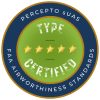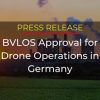Key stakeholders have been demanding autonomous drone flight for years – and
regulators are finally defining clear pathways for the disruptive technology.
Industry leaders have been promising the mass integration of autonomous drones into the national airspace, and hence our daily lives for years. In 2013, Amazon’s Jeff Bezos first unveiled his vision for autonomous drone delivery. Since then, VCs have poured funds into young companies looking to use drones technology to disrupt industries from deliveries, journalism and industrial inspection all the way to actual flying cars.
Yet, for the most part the huge market disruption envisioned for drones seems to be moving much slower than expected. What’s the holdup?
Regulatory hurdles. They’re slowing the further advances of drone technology that promises to change industry.
Since 2016 when Part 107 was released, which enabled businesses to use piloted drones for commercial work, the FAA has been pressured by both industry and government (possibly the only point agreed on by both President Barack Obama and Donald Trump) to enable the industry to move forward. In order to do so, there needs to be clear regulations enabling two main drone operations:
- Flight Beyond the operator Visual Line Of Site (also known as BVLOS) – BVLOS is probably the biggest buzzword in drone regulation, and it would remove the current need for a drone pilot to monitor each drone that flies. The FAA has yet to fully enable commercial BVLOS flight.
- Flight over people – which would enable commercial flights over populated areas. This year, the FAA implemented its Operations over People rule, enabling certified drone models to fly over people.
When can we expect the FAA to enable BVLOS flights?
For anyone following the drone industry, discussing BVLOS operation feels like a never ending discussion, as autonomous drone technology has been around for years, yet regulators haven’t found a way to safely integrate it. But in June 2021, the FAA announced that a new BVLOS Aviation Rulemaking Committee (ARC) has commenced. The BVLOS ARC represents a large-scale collaboration between the drone industry and regulators, and is made up of 86 organizations including 6 selected drone manufacturers. The ARC will make their first round of recommendations to the FAA for the brand new rule regulating BVLOS flight within 6 months, and we expect the new rule to take effect in the next 2-3 years.
The new BVLOS regulation will change everything. Fully autonomous drone flights. No pilots. No human involvement.
That means we will finally see drones implemented at scale as a network of robots providing various vital services for us. In the next few years, you should expect to see autonomous drones flying around delivering packages, inspecting power lines, solar farms, cell towers and bridges. The many applications enabled are demonstrated by the range of drone companies who work closest with the FAA.
For Amazon, BVLOS regulation means fully autonomous consumer deliveries. For other drone delivery companies like Zipline, BVLOS regulation means fully autonomous delivery of vital medical supplies.
And for industrial drones like Percepto’s, it means fully autonomous monitoring of the country’s most risky, complex facilities. On a larger scale, it offers companies responsible for our critical infrastructure the promise of employing a fleet of drones to manage and maintain all of their infrastructure from anywhere in the country.
This new regulation will revolutionize industries and change lives when it comes into effect in the next few years. And in the meantime, the industry will continue to move forward within the existing regulatory framework.
How should the industry proceed until the BVLOS rule is in place?
Since the BVLOS rule will take time to form, the rules the FAA has put in place up until now will still allow field-proven companies to apply for operational approvals to fly BVLOS and over people.
This year the FAA released two new rules – Remote ID rule and Operations over People rule. Each rule addresses a regulatory barrier to drone operations such as drone delivery or emergency response.
Remote ID is critical to allow networks of drones to operate overhead without causing harm. The Remote ID rule requires drone manufacturers to identify drones in flight and the location of their control stations by 2022. This reduces the risk of drones interfering with other aircraft.
The Operations over People rule allows certified drone models to fly over people. Previously, each operation needed to go through a time-consuming approval process even if the same drone model had been approved for a similar operation.
However to get certified, a drone model must first prove it is safe and airworthy. It does so by undergoing flight testing (coined ‘durability and reliability testing’ by the FAA). This is the Type Certification (TC) process, which the FAA first announced in 2019. Fast forward to 2021 – now the first 10 companies are in the final stages of the TC process.
The autonomous drone revolution will look a lot different in the years to come, thanks to successful industry and regulator collaboration
2021 marks a regulatory breakthrough, pushing forward autonomous drone operations. This push of course comes in line with rapidly advancing technology, which has put safety at the forefront to meet regulatory requirements. Still, the large-scale integration of autonomous drones won’t happen all at once. Rather, it will happen gradually over the next few years with more and more operational approvals given out by the FAA.
The progress we’ve seen in 2021 proves that when society sees value in an industry, regulators can solve even the most complex problems – like integrating autonomous drones without pilots into the national airspace. This process has been long in the making, and as with all hard work – the rewards will be equally significant.





